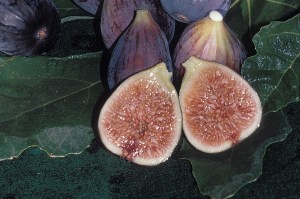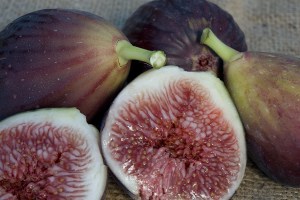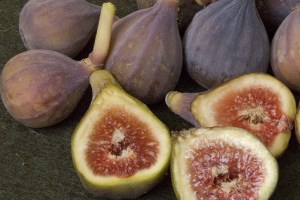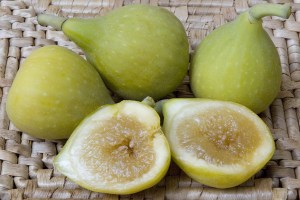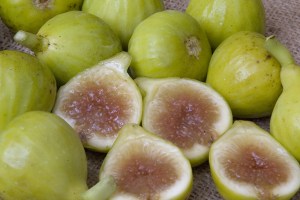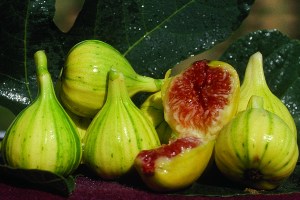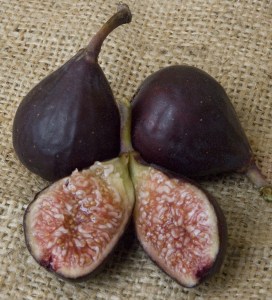Figs
Bare Root Figs
 Figs bring out strong emotions – some people love them, some people loathe them! Most of us here at Bay Laurel are in the first category.
Figs bring out strong emotions – some people love them, some people loathe them! Most of us here at Bay Laurel are in the first category.
Figs are indigenous to Asia Minor and are one of the first fruits to be brought under cultivation. They have been a part of the Mediterranean diet for centuries. Many varieties were grown in the days of the Roman Empire and now more than 200 fig cultivars have evolved.
As you will note, we do not guarantee figs because of their sensitivity to drying out. However, in the last few years, our growers have been able to provide us with very well-rooted plants and the success rate for figs has been notably improved.
More About Figs
Although figs are generally associated with Mediterranean climates, there is a Canadian supplier of figs and die-hard fig lovers in extremely cold climates find ways to overwinter them, either by wrapping them or growing the plants in movable containers. Some of the smaller varieties are best suited for container planting, such as Black Jack or Violette de Bordeaux.
Fig trees are a handsome addition to the landscape because of their large, shapely leaves and graceful form. They are effective as an espalier against a wall. In some relatively cold climates, the tops of the trees will freeze, but they quickly recover. They have even been known to freeze to the ground in certain areas and re-establish themselves from the roots, since fig trees are not grafted.
Dark colored figs tend to be the most popular, but we have found one of the advantages to growing the lighter ones is the birds seem to think they are not ripe and leave them alone! In our area, gophers are a real problem and they have a great love for fig roots, so if you have a gopher population in your area, we strongly advise planting the trees in a wire basket. Fig trees do not require much fertilization or water or pruning. They are wonderful eaten fresh off the tree, but if you have an abundant supply, drying is a good option.

